Rob, a farmer who raises Merino sheep on Australia’s Kangaroo Island, outfitted in a faded t-shirt and jeans imbedded with lanolin and pasture dirt, leaned into a large leather sling to support himself as he turned a ewe flat on her back. Above her, he wielded electric clippers with blades slicing through the air. His white hair and eyebrows tended toward the same unruliness as his animals’ fleece. His sheep skin moccasins, “moxins,” cradled the beast under his feet so he could sense the animal’s movements and grip the wooden floor while shearing. A cotton singlet with denim patches wrapping his ribs protected him from the sheep’s hooves. He took the razor to her belly, back, legs, head, and neck in one swoop. The pile of wool and my mouth dropped as Rob told his visitors―husband Fabio, two Aussie friends, and me―that the Merino breed, which came from Spanish stock, has enabled Australia and New Zealand to produce some of the finest wool in the world. Fifty percent of Australia’s sheep are Merino stock. Here was more evidence of Spain’s global influence three hundred years ago in the farthest places on earth from it.
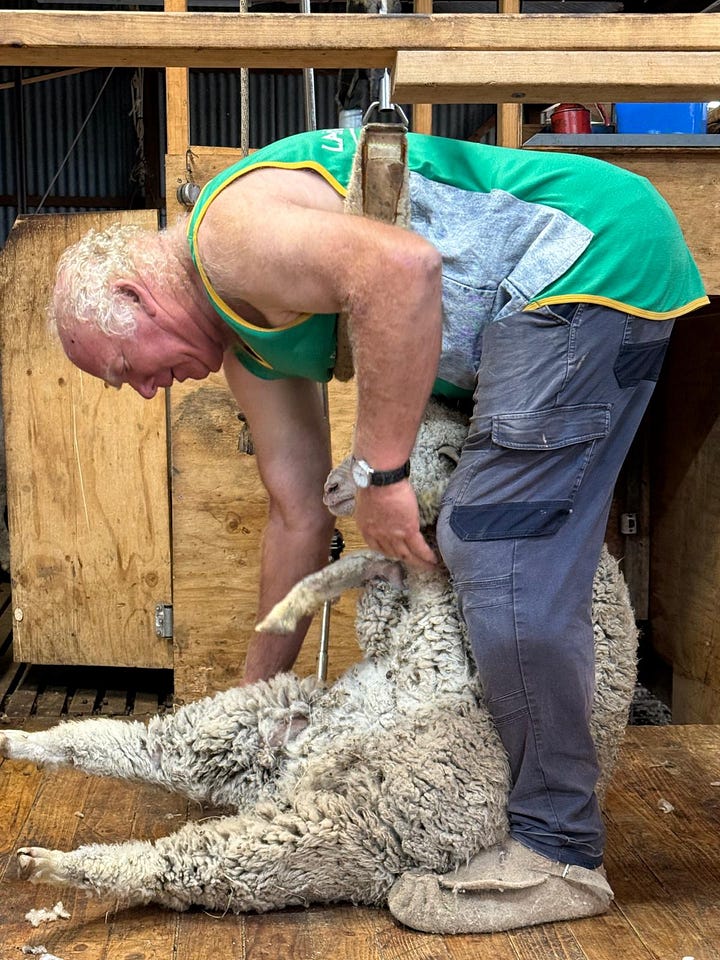
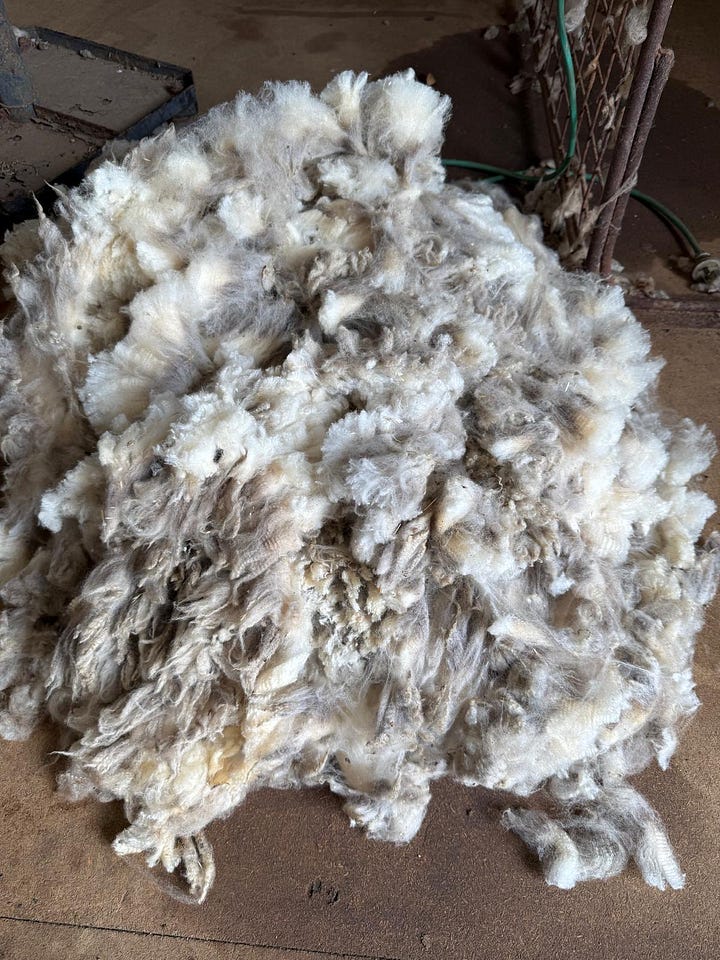
Before our visit to Rob’s farm, Fabio, our Aussie friends, and I had popped into stores and showrooms advertising Merino woolen wear. In the prior three weeks on our camper van tour of New Zealand, Fabio and I had stopped by government-run visitors’ centers in national parks where their shops showcased Merino socks, sweaters, capes, gloves, blankets, and scarves. Of course, we also studied explanations of the geological features, flora, and fauna but checking the clothing racks came first.
I hadn’t thought about Merino wool for decades. I used to wear long underwear made of this fabric for running in extreme cold temperatures. It kept me warm and dry by wicking sweat. My undergarments didn’t smell because of the wool’s natural anti-bacterial capacity. It was thin and fine so it didn’t scratch my skin, keeping me comfortable hours after a road race or running twelve miles in sub-zero temperatures. Perusing the visitors’ centers revived those warm memories.
The Merino sheep that roam these two countries originated in Spain around the 12th century. Their name likely came from the Spanish word “merino,” a person whose official capacity was to inspect sheep pastures. The Iberians bred these sheep for their fine soft wool. The sheep and their fleece became so popular that Spain held a monopoly on them for hundreds of years. Anyone caught exporting them faced execution. The Spaniards refined the wool industry with such high grade fleece that by the 16th century, Spain surpassed England as the country producing the world’s best wool. By the 18th century, Merino sheep, most likely wethers (castrated males), began to leave Spain as gifts and to cement diplomatic deals for the royal courts of France, Hungary, the Netherlands, and other countries. Eventually, they reached New Zealand and Australia. These two countries now boast the largest sheep populations in the world. The ratio of sheep to people in New Zealand is 5:1. In Australia, it’s 3:1.
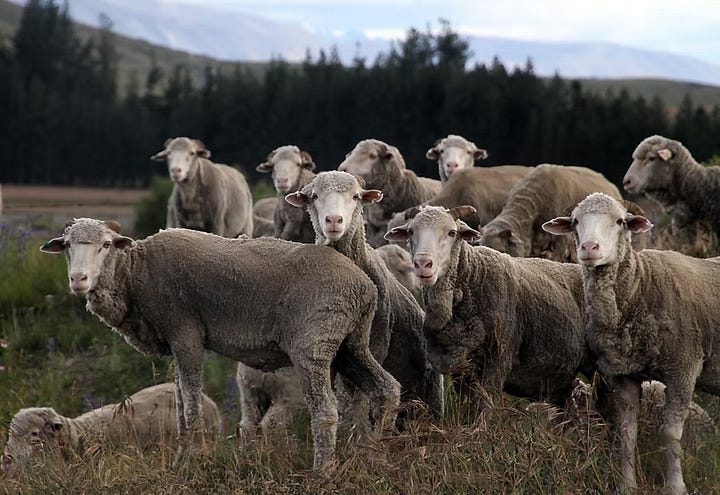

Rob’s family has been in the sheep business since the 1880s when his great grandfather came from Scotland and began raising the animals. Rob grew up on the farm. At that time, over a million sheep grazed the island. His family owned over two thousand of these. When he was fifteen years old, he sheared his first one. Even though he’d seen it done thousands of times, he was surprised how difficult it was to wrestle the sheep to the ground and clip the wool and not the sheep. It took him twenty minutes to complete the job. Soon, he got the hang of it and could let the sheep loose after a five-minute haircut. When he turned seventeen, he decided to shear sheep full time on his family’s and other farms on Kangaroo Island and the mainland.
Rob started shearing and sheepdog shows in the 1990s when a guide herding a bus load of Japanese tourists asked him if they could watch him shear. After this event, he placed a crude sign at the end of the dirt driveway to test if anyone would come. Seventeen cars parked on his property for the first show.

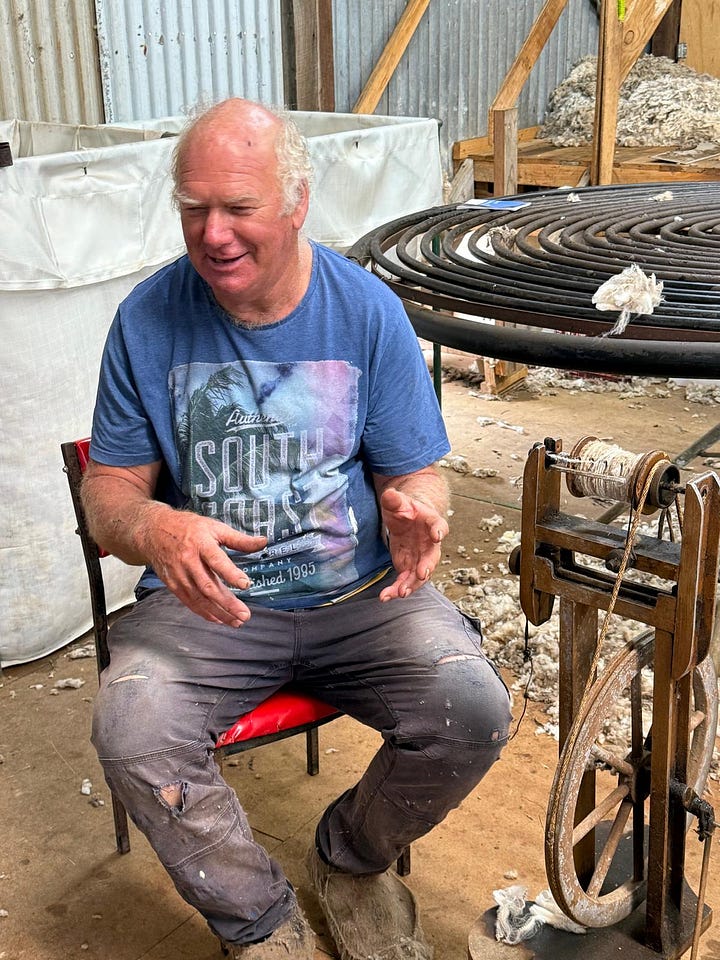
Even his kelpie sheepdogs, Bailey and Bonnie, got into the act. They greeted us by jumping onto our legs, pleading for pats. When Rob called them, they ran circles around the sheep to herd them into a chute. They leapt over its railing onto the animals’ backs to keep them moving down the line. Job completed, they returned to us for praise and pets.

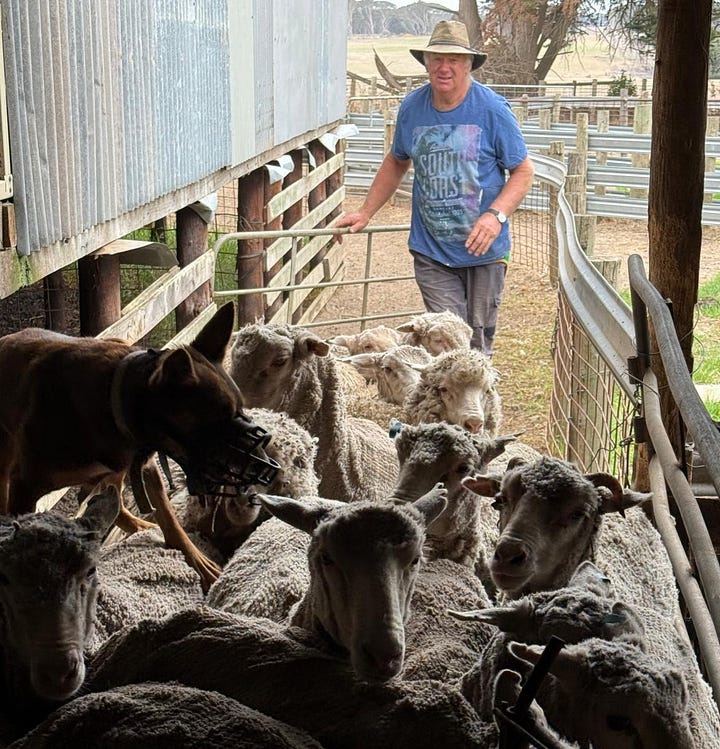
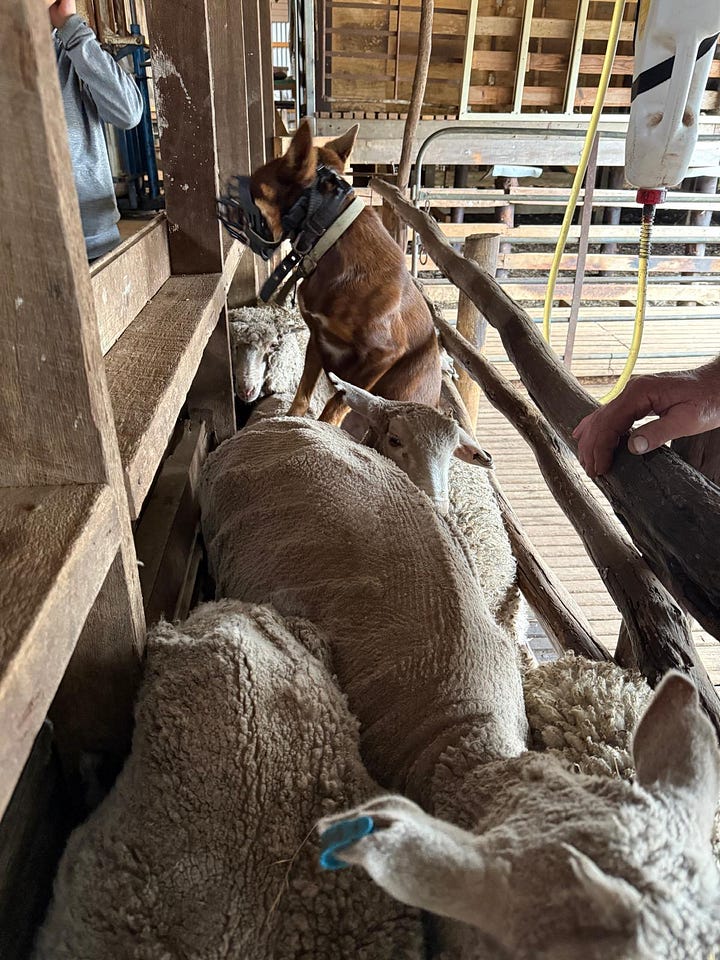

Sheep shearing is a “dirty and disgusting” job, according to Rob. It’s hard physical labor to put a sheep on its back without scaring it and then running the clippers through piles of dirty wool. Between shearing, cleaning the sheeps’ bottoms to rid them of flies, delivering lambs, fixing fences, and nursing sick ones back to health, he rarely takes a day off. Wool prices won’t make him rich. There’s no King Ferdinand and Queen Isabella, the Spanish Catholic kings, to promote Merino wool and drive up the quality and prices as they did in the 15th century. Wool brought in a substantial income to noblemen and church leaders in Spain’s Castile region. Sheep farmers, including Rob, managing farms in Australia’s grasslands haven’t seen those riches.
Every day, Rob and his team start at 7:30. They clip wool for two hours, a period called a “run,” and then take a break. During the “break,” the shearers count the naked sheep in the pen, record the numbers in a tally book, toss the shorn locks into a bin, and label the contents. They record the name of the farm and if the wool has come from males or females and their ages. Fleece from females does not reach the same quality as it does for males because they invest most their energy into five months of pregnancy and four months of lactation. “The only thing the boys can do is eat grass and grow wool,” Rob told us. He sends the bins to Melbourne for processing and spinning. Over 65 percent goes to China. Less than one percent remains in Australia. The finest goes to Italy’s fashion industry.
Rob’s farm provided one more example of Spain’s influence around the world centuries ago. It’s a global exchange that produces wool, wealth, and warmth for producers, suppliers, and buyers. All parts of his wool production have found a market. Lower quality wool gets turned into blankets. The better grades become textiles for men’s and women’s finery. Cosmetics and pharmaceutical companies purchase lanolin extracted during wool processing and turn it into lip balms, moisturizing creams, and ointments for skin inflammation and diaper rashes.
For our autumn hike in the Pyrenees, I’ll pack undies made of the same kind of wool that the Spaniards introduced to the world and that enables Rob and thousands of other sheep farmers to carry on a family tradition, make a living, and produce this fine product for people around the globe.




Leave it to you to find a bit of Spain in all of your adventures! Farmers are incredible - it has to be a labor of love. It’s hard to image the job ad - no vacation, be on the job early and be prepared to stay late, and shear a sheep in 5 minutes or less every few minutes. Must love tourists.
Que increible historia, creería que esta es otra de las profesiones que no podrá reemplazar la IA, afortunadamente, lastimosamente no creo que Rob y otros como el, reciban un pago mas que justo por su extenuante trabajo.